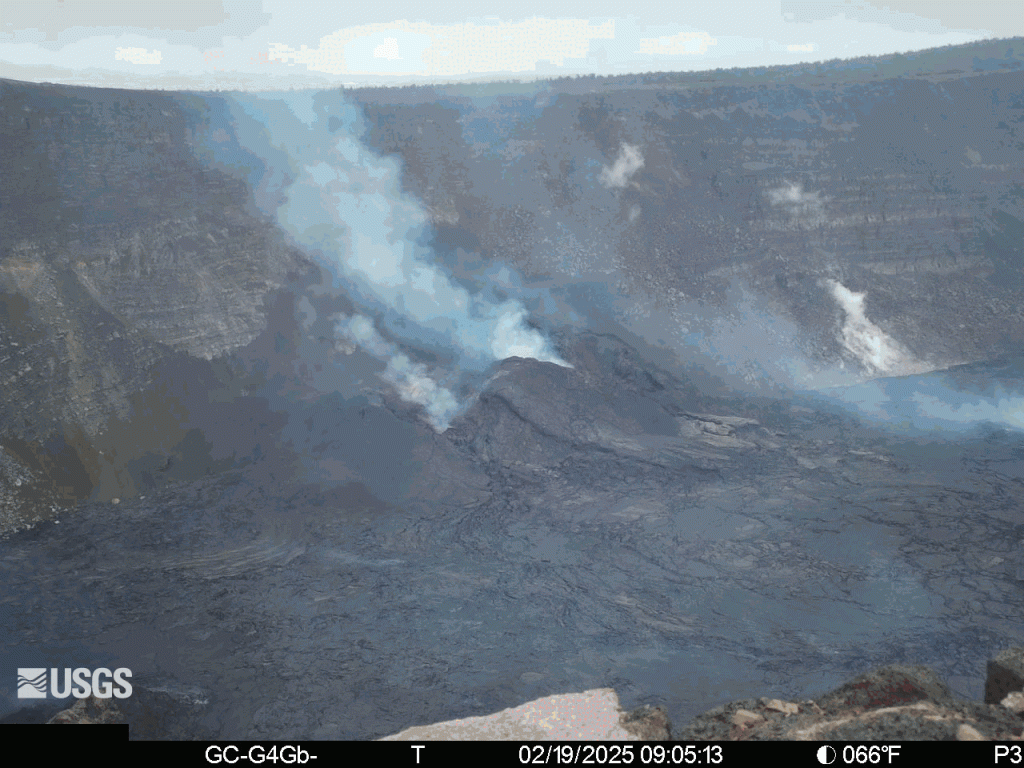Episode 10 of Kīlauea summit eruption pau after less than 13 hours of fountaining

Less than 13 hours. That’s all she wrote.
Episode 10 of eruptive activity associated with the ongoing summit eruption of Kīlauea volcano in Hawaiʻi Volcanoes National Park is pau, finished, done, over, ended after lava once again foutained forth up to 400 feet at one point just a night before.
Fountaingin from the north vent in Halemaʻumaʻu Crater started at 8:22 p.m. Feb. 19 and ended at 9:18 a.m. Feb. 20 after gradually declining in height.
Lava flows from this episode covered 75% of the cater floor within the southern part of Kaluapele, Kīlauea’s summit caldera.
About 6.5 microradians of deflation were recorded during this episode. The end of the activity was coincident with a rapid change from deflation to inflation at the summit and a decrease in seismic tremor intensity.
Each episode of fountaining since the eruption began Dec. 23, 2024, has continued for between 13 hours and 8 days. Eruptive activity has been separated by pauses of from less than 24 hours to 12 days.
You can keep up with the volcano yourself by watching the summit livestream.

High levels of volcanic gas — primarily water vapor, carbon dioxide and especially sulfur dioxide — are the primary hazard of concern during this eruption since it can have far-reaching effects downwind.
Sulfur dioxide, as it is continuously released from the summit during the eruption, will react in the atmosphere to create the visible haze known as vog, or volcanic smog, downwind of Kīlauea.
Additional hazards include Pele’s hair and other volcanic fragments from lava fountains that can fall on the ground downwind of the eruptive vents.
Pele’s hair, which can sometimes cluster and tangle together on the ground, giving it the appearance of tumbleweed, is strands of volcanic glass often produced by lava fountaining activity. Strong winds can waft these light particles to greater distances downwind, the extent of which depends on fountaining activity and wind conditions.
No changes have been detected in the volcano’s East Rift Zone or Southwest Rift Zone. All activity is confined within a closed area of Hawaiʻi Volcanoes National Park.
Kīlauea’s volcano alert level remains at watch and its aviation color code at orange.
Hawaiian Volcano Observatory continues to closely monitor Kīlauea and will issue an eruption update tomorrow morning unless there are significant changes before then.

Sponsored Content
Comments








